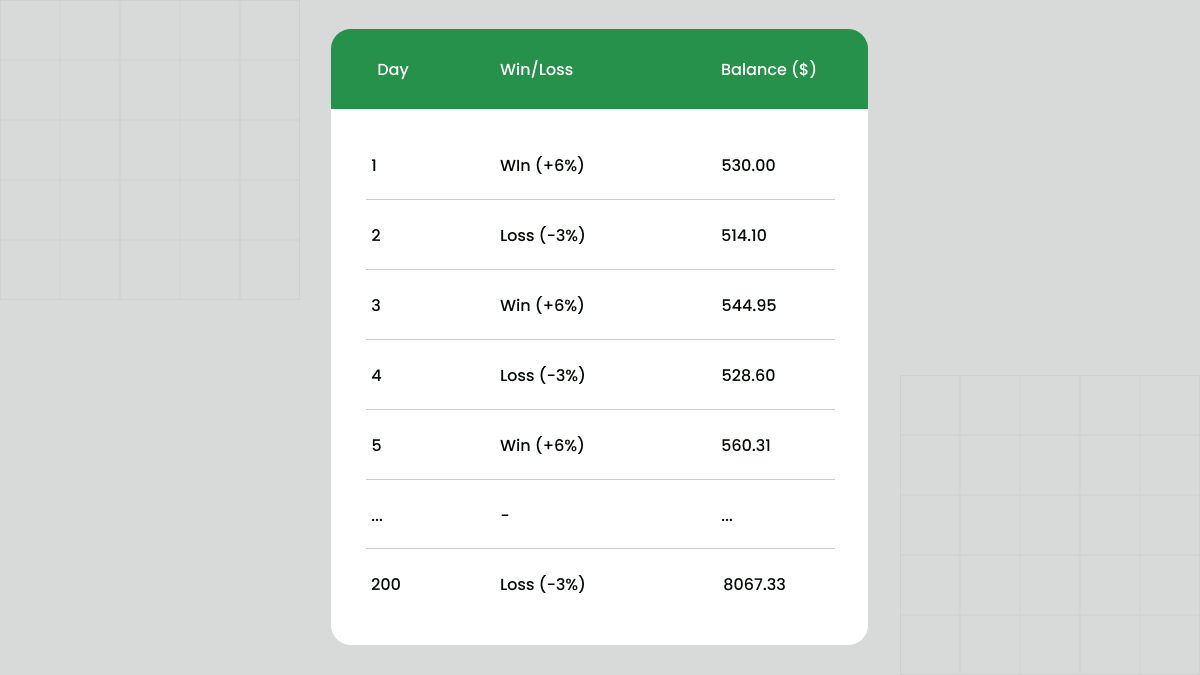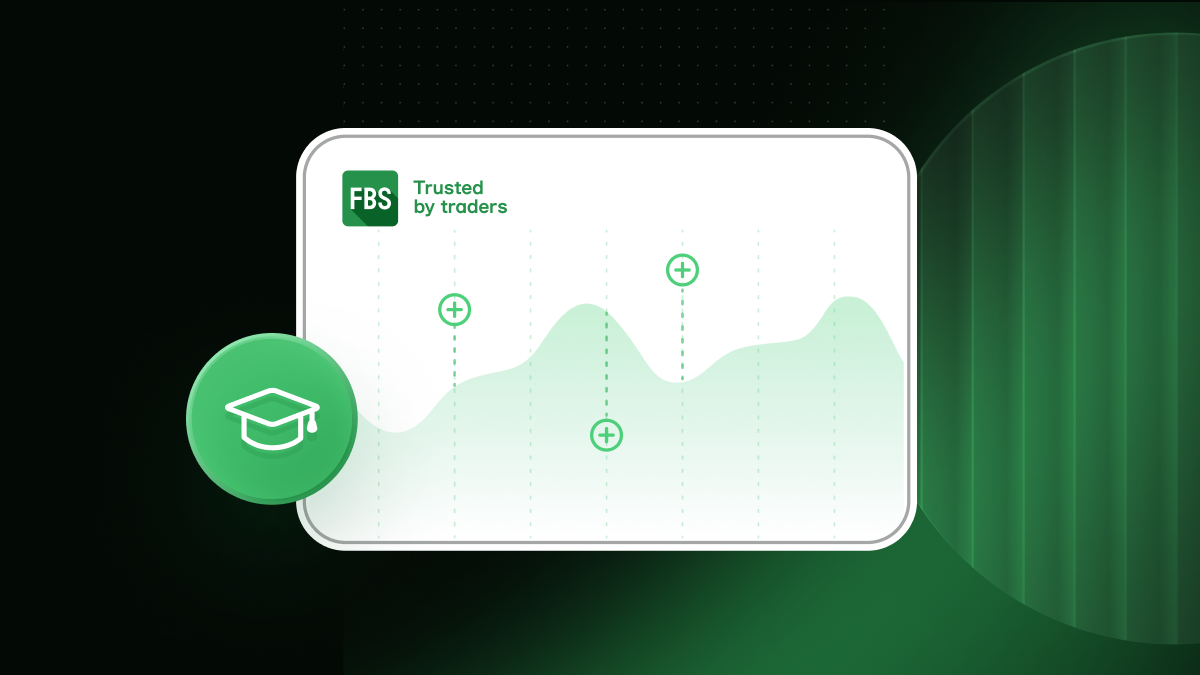Compound interest in trading: how to use it to increase your deposit
Introduction
People often treat trading as a sprint. However, like most everything in life, trading is more like a marathon where victory depends on patience, strategy, and endurance.
Some people make chaotic trades and try to “beat the market.” They may sometimes earn tens of thousands in a single day. Simultaneously, others work hard to evaluate each trade and gradually build up their capital. The difference between these approaches distinguishes a successful trader from a “gambler.”
While a trader works according to their strategy, a gambler tries to make “all the money in the world” but loses most of the time and has nothing left.
This article will discuss a trading strategy that will help you win this marathon and change your overall understanding of trading in the financial markets.
What is compound interest in trading
Many great traders and investors have made their fortunes through compound interest. The concept involves reinvesting profits from previous trades to increase the volume of future trades. Unlike simple interest, where profits are only calculated using the original capital, compound interest calculates earnings on the capital plus accumulated profits (or minus accumulated losses). Thus, each transaction involves a specific portion of the available margin, which, in monetary terms, increases with the account growth and drops when the balance lowers.
Now, let's consider a real-life situation where a trader uses a $500 deposit, the risk-to-reward ratio is 1 to 2, the maximum loss from a single trade is 3% of the balance, and the win rate is 50%.
With this strategy, our trader receives 6% of their investment for every win and loses 3% for every lost trade. This asymmetry between the size of the wins and losses is crucial: the wins are twice as large as the losses.
So, how does compound interest work in practice?
Here is a formula anyone can use to simplify calculations:
E=D×((1+Pwin)×(1−Lloss))N×WinRate
- E – the final balance;
- D – the initial deposit;
- Pwin – the percentage of profit per won trade;
- Lloss – the percentage of loss per lost trade;
- N – the number of trades;
- WinRate – a portion of wins from the total number of trades (as a fraction of 1, e.g., 0.5 for 50%).
If a trader makes a successful trade, the $500 deposit grows by 6% or $30, bringing the total amount to $530. Conversely, if a trade is lost, the deposit will decrease by 3%, which is $15, bringing the balance to $485.
We see the magic of compound interest working if we consider a few trades. With every win, the capital grows by 6%. It is crucial that the impact of losses is mitigated by the lower percentage of losses and capital gains from previous wins.

Using the formula above, we can easily calculate how the deposit will grow using the parameters we’ve mentioned.
E=500×((1+0.06)×(1−0.03))200×0.5
E=8067.33
This formula is very straightforward and convenient, so anyone can use it to build their trading strategy. If you implement such a strategy, you will soon notice how your deposit grows and how you approach your ultimate goals.
True, a year has 250 trading days on average, but since no one trades daily, it will have roughly 200 days for you. We’ve calculated the progress using the formula above and found that on the 200th trading day, the balance will be $8067.33, dramatically higher than the initial deposit of $500. It means that the deposit will grow by 1513% in a single year of trading!
You can see the opportunities the compound interest opens in trading, even with a moderate win rate of 50%. If we consider more efficient trading, the result will be even better. Let's assume that our win rate is 60%. After a similar year with 200 trading days, the balance will reach $14,069. This means the deposit could grow by 2713% in a year!
What if we keep trading for longer than a year? If we stick to the win rate of 50% and use the amount of $8067.33 as our initial deposit, the balance after 200 trading days would reach $130,163.
The effect of compounding is more impressive with time. Even with a moderate 50% win rate, if a trader is disciplined enough to earn 6% on wins and lose only 3% on lost trades, their capital will keep growing. It is important to note that this strategy requires consistency in applying a trading plan and risk management.
Thus, we have yet another proof that trading produces better results when it is based on a sound strategy.
However, despite of a significant potential, traders must also be mindful of risks. A series of losses can quickly wipe out capital if a trader neglects the planned 3% loss limit. Here discipline and a well-tested trading strategy are essential.
Conclusion
To summarize it, clearly strategy and patience help win in trading. And compound interest is a powerful tool for traders who want to increase their income over time and consider trading to be a form of investing. If one carefully manages risks and sticks to a strategy with more wins than losses, even a moderate deposited amount can increase significantly.
If a trader takes small wise steps every day and does not attempt to make all the money in the world in a short period, it is possible to reach an excellent result and achieve impressive profits. As Warren Buffett once said, “The stock market is a device for transferring money from the impatient to the patient.”
FAQ
How do you leverage compound interest?
Many people withdraw all the profit they make, so they evaluate their profits for a short period only. However, if you choose to re-invest your profit, you will eventually be able to increase the volumes of your positions. With a wise strategy where the number of losses is compensated by wins, you will earn much more overtime.
Does compounding work in the stock market?
Yes, stock market also offers an opportunity to benefit from compound interest and earn more over time. True, stocks are associated with higher risks but the returns can be bigger. If you implement a wise investment strategy and use compound interest in the stock market, you can earn as much as 10% or even 15% in annual returns.
What is the magic of compounding?
Compound interest makes your money work for you instead of you working for money. Compounding helps you build your wealth even without impressive initial investment. This is something many people dream of but neglect the opportunity.
What is an example of compounding in the stock market?
When you invest in stocks, you earn a dividend. People usually withdraw the dividend. But if you choose to re-invest it in the stocks that have already proven to work well for you, you can amplify the effect and earn more over time.





